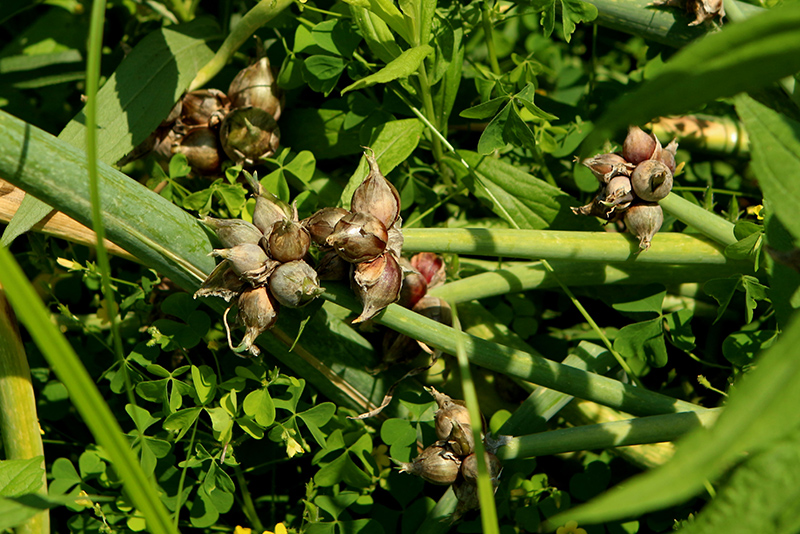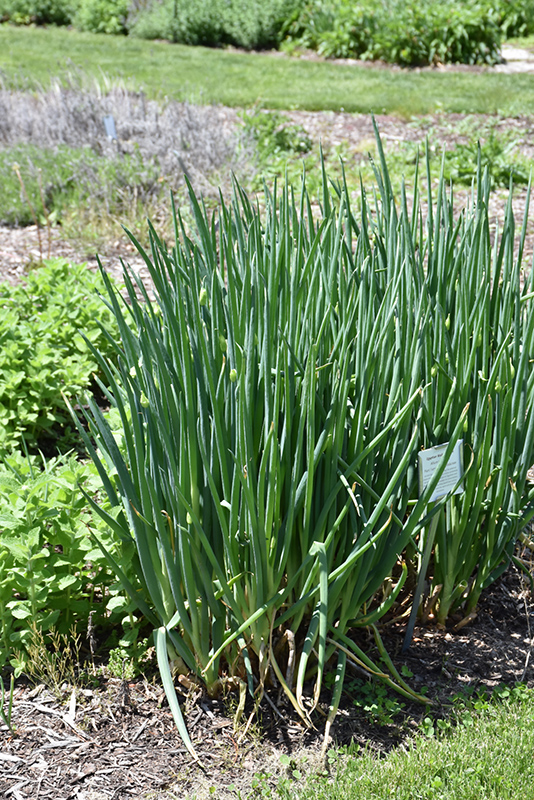Height: 24 inches
Spacing: 6 inches
Sunlight:
![]()
Hardiness Zone: 3a
Other Names: Top Setting Onion, Tree Onion, Walking Onion
Description:
A low maintenance, edible landscape that produces bulbets instead of flowers; green shoots can be eaten as chives, while the bulbets and onion bulb resemble shallots; strong pungent flavor, delicious when roasted, sauteed or added to meat and fish dishes
Edible Qualities
Egyptian Walking Onion is a perennial vegetable plant that is commonly grown for its edible qualities. The entire above-ground parts of the plant are edible, and can be harvested at any time in the season. The edible parts have a pungent taste with a crisp texture and a distinctive fragrance.
The plant is most often used in the following ways:
- Fresh Eating
- Eating When Cooked/Prepared
- Cooking
- Drying
- Seasoning
Planting & Growing
Egyptian Walking Onion will grow to be about 24 inches tall at maturity, with a spread of 10 inches. When planted in rows, individual plants should be spaced approximately 6 inches apart. It grows at a medium rate, and under ideal conditions can be expected to live for approximately 5 years. As an herbaceous perennial, this plant will usually die back to the crown each winter, and will regrow from the base each spring. Be careful not to disturb the crown in late winter when it may not be readily seen!
This plant is typically grown in a designated vegetable garden. It should only be grown in full sunlight. It does best in average to evenly moist conditions, but will not tolerate standing water. It is not particular as to soil type or pH, and is able to handle environmental salt. It is highly tolerant of urban pollution and will even thrive in inner city environments. This species is not originally from North America. It can be propagated by division.
A NetPS Plant Finder tool



